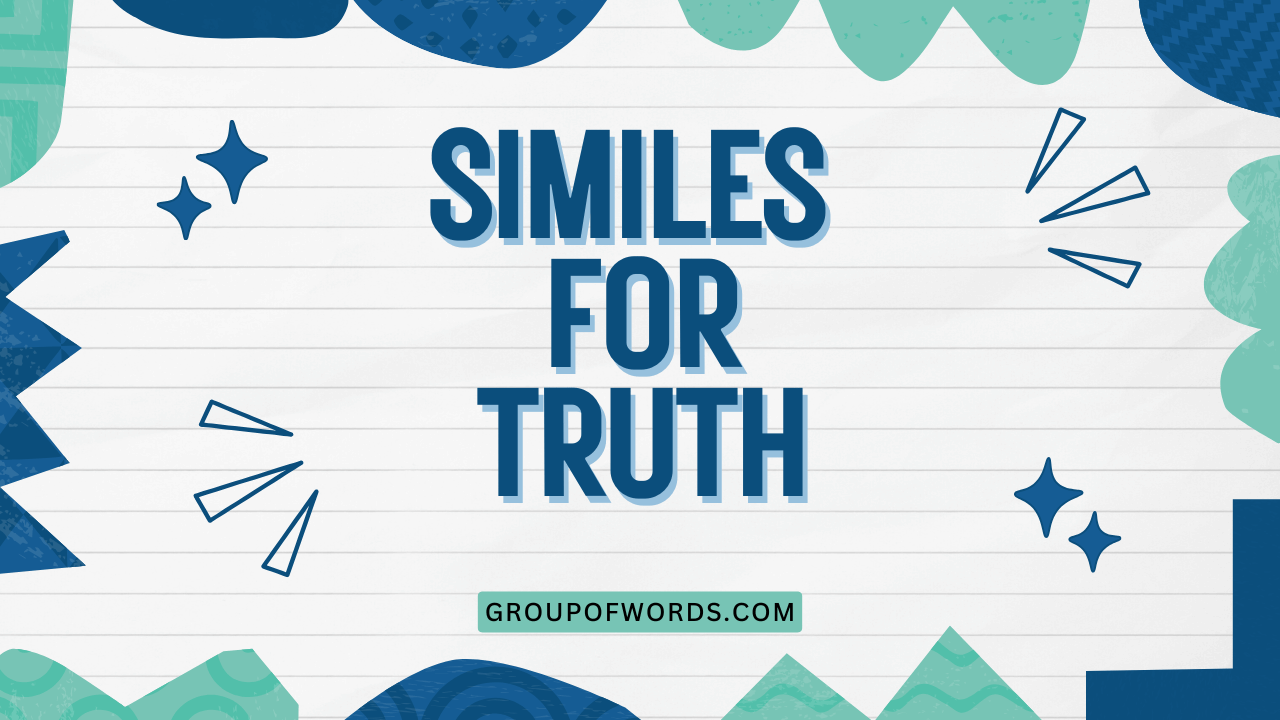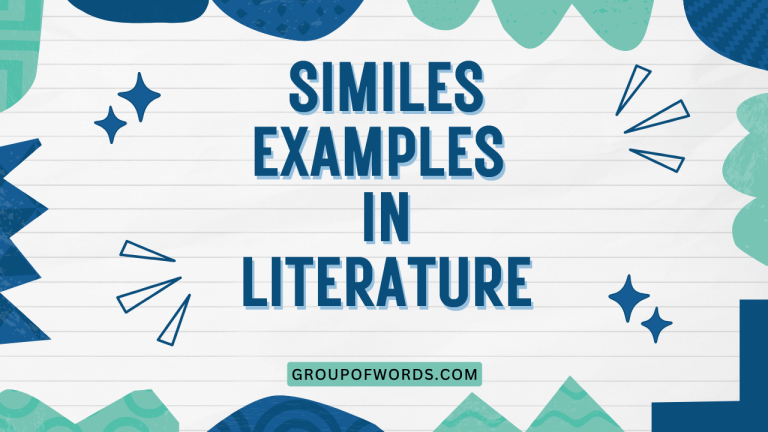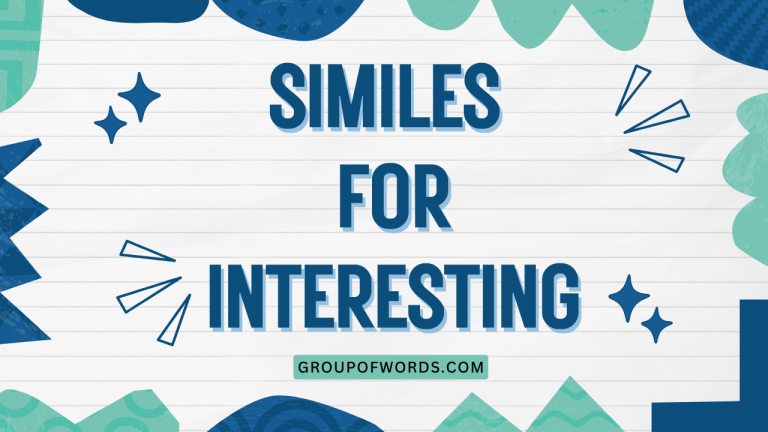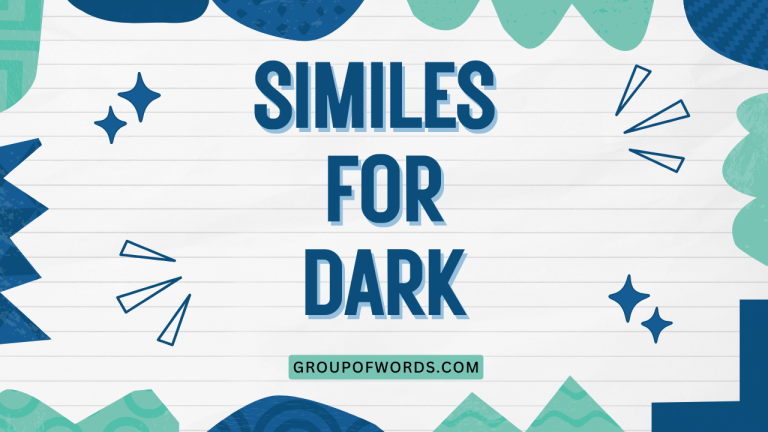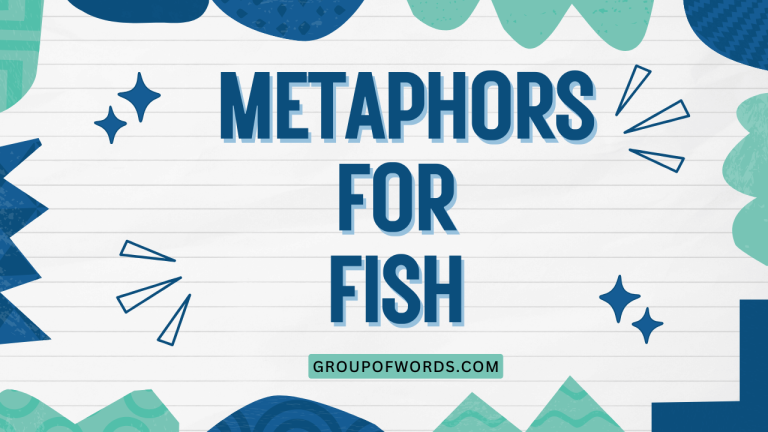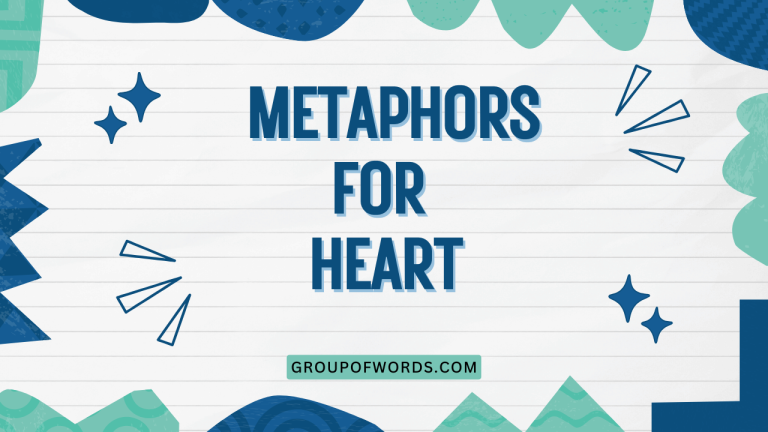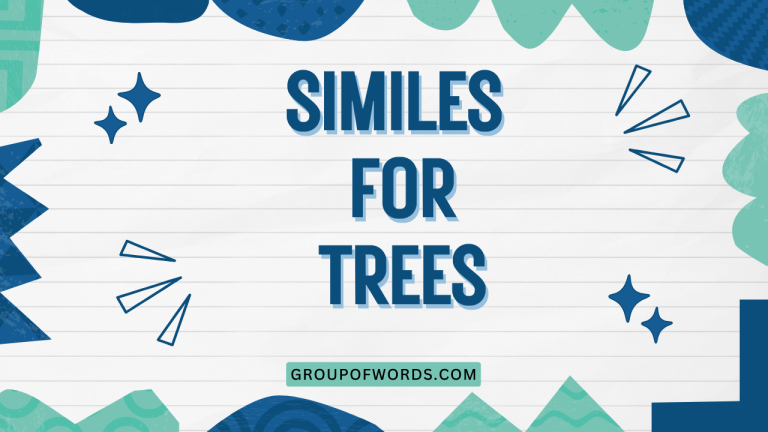Truth in Similes: A Comprehensive Guide
Understanding similes is crucial for enhancing your grasp of figurative language and enriching your writing. Similes, comparisons using “like” or “as,” add depth and vividness to descriptions.
This article will delve into the use of similes to express truth, exploring their structure, types, and application. Whether you’re a student, writer, or language enthusiast, this guide will equip you with the knowledge to effectively use similes to convey truth in your communication.
Similes are powerful tools for illustrating the nature of truth, often making abstract concepts more relatable and understandable. By comparing truth to familiar objects or experiences, writers can evoke strong imagery and emotional resonance.
This article aims to provide a thorough understanding of how similes can be used to illuminate various facets of truth, from its clarity and purity to its complexity and elusiveness. With numerous examples, exercises, and explanations, you will learn to master the art of using similes to express truth in a compelling and meaningful way.
Table of Contents
- Definition of Similes for Truth
- Structural Breakdown of Similes
- Types of Truth Similes
- Examples of Similes for Truth
- Usage Rules for Similes
- Common Mistakes When Using Similes
- Practice Exercises
- Advanced Topics in Similes
- Frequently Asked Questions
- Conclusion
Definition of Similes for Truth
A simile is a figure of speech that compares two unlike things using the words “like” or “as.” When used to describe truth, similes help to make abstract concepts more concrete and relatable. They offer a vivid way to express the characteristics of truth, such as its clarity, resilience, or complexity.
Similes can also be used to highlight the impact or perception of truth.
In essence, a simile for truth takes a characteristic or quality of truth and compares it to something else that shares a similar attribute. This comparison allows the audience to grasp the essence of truth more easily.
For example, saying “Truth is like a beacon in the darkness” compares truth to a guiding light, emphasizing its ability to illuminate and guide. The power of similes lies in their ability to create a mental image that resonates with the reader or listener, making the concept of truth more accessible and memorable.
The function of similes in conveying truth is multifaceted. They not only clarify and illustrate but also add emotional depth and persuasive power to the message.
By evoking imagery and associations, similes can make the concept of truth more compelling and impactful. Whether used in literature, speeches, or everyday conversation, similes enhance the communication of truth by making it more engaging and understandable.
Structural Breakdown of Similes
Similes follow a basic structure that includes two main components: the subject (topic) and the vehicle (the item it is compared to), connected by “like” or “as.” Understanding this structure is key to creating effective similes.
The basic formula for a simile is as follows: Subject + “like” or “as” + Vehicle. The subject is the thing being described (in this case, truth), and the vehicle is the thing it is being compared to. The “like” or “as” serves as the bridge connecting the two.
For example, in the simile “Truth is like a mirror,” “truth” is the subject, “mirror” is the vehicle, and “like” is the connector. This comparison suggests that truth, like a mirror, reflects reality accurately.
The effectiveness of a simile depends on the relationship between the subject and the vehicle, and how well that relationship illuminates a particular aspect of the subject.
A well-constructed simile relies on a clear and relevant connection between the subject and the vehicle. The vehicle should possess a quality or characteristic that is also applicable to the subject, allowing for a meaningful comparison.
The strength of the simile lies in its ability to highlight a specific attribute of the subject in a memorable and impactful way. By mastering the structural elements of similes, one can create powerful and evocative expressions of truth.
Types of Truth Similes
Similes for truth can be categorized based on the aspect of truth they emphasize. Here are a few common types:
Similes Emphasizing Clarity
These similes highlight the transparent and easily understandable nature of truth.
Similes Emphasizing Resilience
These similes focus on the enduring and unbreakable quality of truth.
Similes Emphasizing Revelation
These similes illustrate how truth can uncover hidden things or bring understanding.
Similes Emphasizing Impact
These similes convey the powerful effect that truth can have.
Similes Emphasizing Elusiveness
These similes describe the difficulty in finding or holding onto truth.
Examples of Similes for Truth
Here are numerous examples of similes for truth, categorized by the aspect of truth they emphasize. Each category provides varied examples to illustrate the different ways in which truth can be described using similes.
Clarity-Focused Similes
These similes aim to convey the transparency and unambiguous nature of truth. They often compare truth to things that are clear, bright, or easily visible.
The following table provides examples of similes that emphasize the clarity of truth. Each entry illustrates how truth can be likened to something that is easily understood or seen.
| Simile | Explanation |
|---|---|
| Truth is like a clear sky after a storm. | Truth brings clarity and peace after a period of confusion or conflict. |
| Truth is as plain as the nose on your face. | Truth is obvious and undeniable. |
| Truth is like a crystal-clear stream. | Truth is pure and easy to see through. |
| Truth is as bright as the sun. | Truth is radiant and illuminating. |
| Truth is like a well-lit room. | Truth brings understanding and removes shadows. |
| Truth is as transparent as glass. | Truth is easily seen through and understood. |
| Truth is like a lighthouse in the fog. | Truth guides and clarifies in times of uncertainty. |
| Truth is as clear as day. | Truth is evident and unmistakable. |
| Truth is like a clean window. | Truth provides a clear view of reality. |
| Truth is as straightforward as a straight line. | Truth is direct and uncomplicated. |
| Truth is like a polished mirror. | Truth reflects reality accurately and without distortion. |
| Truth is as lucid as a mountain spring. | Truth is pure, clear, and easy to understand. |
| Truth is like a beacon in the night. | Truth serves as a guiding light, illuminating the path. |
| Truth is as obvious as a full moon. | Truth is impossible to ignore or overlook. |
| Truth is like a magnifying glass. | Truth clarifies and brings details into focus. |
| Truth is as simple as 2 + 2 = 4. | Truth is basic, undeniable, and universally accepted. |
| Truth is like a map leading to a destination. | Truth guides you directly to the correct conclusion. |
| Truth is as understandable as a child’s drawing. | Truth is simple and easy for anyone to comprehend. |
| Truth is like a spotlight in a dark theater. | Truth illuminates what was once hidden, making it visible. |
| Truth is as apparent as the sky above. | Truth is evident and cannot be concealed. |
| Truth is like a surgeon’s scalpel. | Truth cuts through the complexity to reveal what is hidden. |
| Truth is as unambiguous as a stop sign. | Truth is clear and leaves no room for misinterpretation. |
| Truth is like a perfectly tuned instrument. | Truth resonates with clarity and harmony. |
| Truth is as pristine as untouched snow. | Truth is pure and unblemished. |
| Truth is like a key that unlocks a door. | Truth provides access and understanding. |
Resilience-Focused Similes
The following similes emphasize the enduring and unbreakable quality of truth. They often compare truth to things that are strong, durable, or resistant to damage.
This table showcases similes that highlight the resilience of truth. Each comparison illustrates how truth can withstand challenges and remain intact.
| Simile | Explanation |
|---|---|
| Truth is like a rock in a storm. | Truth remains steadfast and unyielding despite challenges. |
| Truth is as strong as steel. | Truth is durable and resistant to deformation. |
| Truth is like a deeply rooted tree. | Truth is firmly established and cannot be easily uprooted. |
| Truth is as unyielding as a diamond. | Truth is hard, resistant, and cannot be easily broken. |
| Truth is like a fortress. | Truth provides a strong defense against falsehoods. |
| Truth is as constant as the North Star. | Truth is a reliable and unchanging guide. |
| Truth is like an anchor in turbulent waters. | Truth provides stability and prevents being swayed by falsehoods. |
| Truth is as resilient as a rubber band. | Truth can be stretched and tested but always returns to its original form. |
| Truth is like a monument. | Truth stands the test of time and remains a lasting testament. |
| Truth is as unbreakable as a law of physics. | Truth is a fundamental principle that cannot be violated. |
| Truth is like the foundation of a building. | Truth provides essential support and stability. |
| Truth is as enduring as the mountains. | Truth is timeless and withstands the passage of time. |
| Truth is like a sturdy bridge. | Truth connects and supports across divides. |
| Truth is as robust as an oak tree. | Truth is strong, durable, and deeply rooted. |
| Truth is like the backbone of society. | Truth provides essential structure and support. |
| Truth is as unwavering as gravity. | Truth is a constant force that cannot be defied. |
| Truth is like the core of the Earth. | Truth is fundamental and provides essential stability. |
| Truth is as solid as concrete. | Truth provides a firm and reliable base. |
| Truth is like a shield against deception. | Truth protects against falsehood and misinformation. |
| Truth is as durable as ancient stone. | Truth withstands the test of time and remains intact. |
| Truth is like the bedrock beneath the soil. | Truth forms a solid and unyielding foundation. |
| Truth is as tough as tempered steel. | Truth is strong and resistant to damage. |
| Truth is like a resilient plant that grows through cracks. | Truth finds a way to emerge even in challenging circumstances. |
| Truth is as constant as the tides. | Truth is a reliable and predictable force. |
| Truth is like a lighthouse that withstands any storm. | Truth provides guidance and stability regardless of the circumstances. |
Revelation-Focused Similes
These similes illustrate how truth can uncover hidden things or bring understanding. They often compare truth to light, keys, or other revealing elements.
The following table provides examples of similes that emphasize the revealing nature of truth. Each entry illustrates how truth can uncover hidden information and bring clarity.
| Simile | Explanation |
|---|---|
| Truth is like a flashlight in the dark. | Truth illuminates hidden things and reveals what was unseen. |
| Truth is as sharp as a knife. | Truth cuts through deception to reveal what is real. |
| Truth is like a key that unlocks a door. | Truth provides access to understanding and knowledge. |
| Truth is as revealing as a photograph. | Truth captures and exposes reality accurately. |
| Truth is like a detective’s investigation. | Truth uncovers clues and reveals the facts. |
| Truth is as insightful as a wise mentor. | Truth provides deep understanding and guidance. |
| Truth is like an archaeologist’s dig. | Truth unearths hidden artifacts and reveals history. |
| Truth is as clarifying as a magnifying glass. | Truth brings details into focus and makes them clear. |
| Truth is like a prism that separates light. | Truth reveals the different components of a complex situation. |
| Truth is as enlightening as a sunrise. | Truth brings new awareness and understanding. |
| Truth is like a confession. | Truth brings hidden feelings to the surface. |
| Truth is as revealing as a mirror reflecting reality. | Truth reflects the actual state of affairs without distortion. |
| Truth is like an X-ray revealing hidden structures. | Truth exposes what is invisible to the naked eye. |
| Truth is as illuminating as a streetlamp at night. | Truth makes the path ahead clear and safe. |
| Truth is like a microscope revealing tiny details. | Truth allows for a closer examination and deeper understanding. |
| Truth is as insightful as a psychological analysis. | Truth delves into the underlying causes and motivations. |
| Truth is like a map that reveals hidden routes. | Truth provides a clear path to the correct destination. |
| Truth is as revealing as peeling back layers of an onion. | Truth uncovers the core by removing superficial elements. |
| Truth is like a sunrise after a long night. | Truth brings new hope and clarity after a period of darkness. |
| Truth is as insightful as a philosopher’s examination. | Truth provides deep contemplation and understanding. |
| Truth is like a searchlight that cuts through the darkness. | Truth reveals hidden details and provides clear direction. |
| Truth is as enlightening as a teacher’s lesson. | Truth imparts knowledge and understanding. |
| Truth is like an open book that reveals its contents. | Truth is accessible and available to anyone who seeks it. |
| Truth is as revealing as a lie detector test. | Truth uncovers deception and exposes the facts. |
| Truth is like a key that unlocks a treasure chest. | Truth provides access to valuable knowledge and understanding. |
Impact-Focused Similes
These similes convey the powerful effect that truth can have. They often compare truth to forces of nature, strong emotions, or significant events.
This table illustrates similes that emphasize the impact of truth. Each example shows how truth can have a significant effect on individuals and situations.
| Simile | Explanation |
|---|---|
| Truth is like a tidal wave. | Truth can be overwhelming and unstoppable. |
| Truth is as shocking as a lightning bolt. | Truth can be sudden and impactful. |
| Truth is like a volcano erupting. | Truth can release pent-up emotions or information. |
| Truth is as liberating as breaking free from chains. | Truth can set you free from oppression and falsehoods. |
| Truth is like a powerful medicine. | Truth can heal and restore. |
| Truth is as transformative as a butterfly emerging from a cocoon. | Truth can bring about significant change. |
| Truth is like a strong wind that clears the air. | Truth removes confusion and brings clarity. |
| Truth is as jarring as a sudden alarm. | Truth can be unsettling but necessary. |
| Truth is like a hammer breaking down walls. | Truth overcomes obstacles and barriers. |
| Truth is as galvanizing as a call to action. | Truth can inspire and motivate. |
| Truth is like a bomb that shatters illusions. | Truth destroys false beliefs and perceptions. |
| Truth is as compelling as a magnet. | Truth attracts and draws people towards it. |
| Truth is like a jolt of electricity. | Truth can energize and awaken. |
| Truth is as refreshing as a cool rain after a drought. | Truth revives and replenishes. |
| Truth is like a wake-up call. | Truth alerts you to reality and demands attention. |
| Truth is as impactful as a surgeon’s intervention. | Truth can be painful but ultimately beneficial. |
| Truth is like a cleansing fire. | Truth purifies and eliminates impurities. |
| Truth is as powerful as a legal verdict. | Truth brings closure and justice. |
| Truth is like a reset button. | Truth allows you to start over with a clear understanding. |
| Truth is as transformative as a caterpillar becoming a butterfly. | Truth brings about fundamental and positive change. |
| Truth is like a storm that clears the sky. | Truth removes obstacles and makes way for progress. |
| Truth is as cathartic as a good cry. | Truth releases emotions and brings relief. |
| Truth is like a dam breaking. | Truth releases pent-up pressure and emotions. |
| Truth is as liberating as taking off a heavy burden. | Truth frees you from oppression and restrictions. |
| Truth is like a ray of sunshine after a gloomy day. | Truth brings happiness and hope. |
Elusiveness-Focused Similes
These similes describe the difficulty in finding or holding onto truth. They often compare truth to fleeting things, hidden objects, or difficult pursuits.
The following table provides examples of similes that emphasize the elusiveness of truth. Each entry illustrates how truth can be difficult to find or grasp.
| Simile | Explanation |
|---|---|
| Truth is like a mirage in the desert. | Truth can appear close but be unattainable. |
| Truth is as elusive as a dream. | Truth can be difficult to grasp and remember. |
| Truth is like a shadow that disappears when you try to catch it. | Truth can be fleeting and hard to hold onto. |
| Truth is as hidden as a needle in a haystack. | Truth can be difficult to find among falsehoods. |
| Truth is like quicksilver. | Truth is fluid and hard to contain. |
| Truth is as intangible as smoke. | Truth can be difficult to define or grasp. |
| Truth is like a ghost. | Truth can be elusive and difficult to prove. |
| Truth is as rare as a four-leaf clover. | Truth is uncommon and hard to find. |
| Truth is like a whisper in the wind. | Truth can be easily missed or misunderstood. |
| Truth is as difficult to hold onto as water. | Truth can slip through your fingers. |
| Truth is like a will-o’-the-wisp. | Truth can be misleading and deceptive. |
| Truth is as hard to see as the forest for the trees. | Truth can be obscured by details. |
| Truth is like a distant star. | Truth can be far away and hard to reach. |
| Truth is as elusive as a butterfly. | Truth can be beautiful but fleeting. |
| Truth is like a secret buried deep. | Truth can be hidden and hard to uncover. |
| Truth is as intangible as a feeling. | Truth can be subjective and hard to define. |
| Truth is like a rainbow. | Truth can be beautiful but temporary. |
| Truth is as hard to find as a lost treasure. | Truth can require a long and difficult search. |
| Truth is like a snowflake. | Truth can be unique and fragile. |
| Truth is as fleeting as a shooting star. | Truth can be brief and easily missed. |
| Truth is like a hidden path in the woods. | Truth requires careful navigation to discover. |
| Truth is as hard to capture as a sunbeam. | Truth can be elusive and intangible. |
| Truth is like a rumor. | Truth can be difficult to verify. |
| Truth is as enigmatic as a riddle. | Truth can be puzzling and difficult to understand. |
| Truth is like a hidden gem. | Truth requires effort to discover and appreciate. |
Usage Rules for Similes
Using similes effectively requires adherence to certain rules. Incorrect usage can diminish the impact of your writing or even confuse your audience.
Rule 1: Ensure Relevance: The comparison must be relevant and logical. The vehicle should share a quality with the subject that is being emphasized.
Rule 2: Avoid Clichés: Overused similes lose their impact. Strive for originality to make your writing fresh and engaging.
Rule 3: Clarity is Key: The simile should enhance understanding, not obscure it. Choose vehicles that your audience can easily relate to.
Rule 4: Maintain Consistency: Ensure the simile aligns with the overall tone and style of your writing.
Rule 5: Use Sparingly: Similes are powerful but can be overwhelming if used too frequently. Use them judiciously to maximize their impact.
Common Mistakes When Using Similes
Even experienced writers can make mistakes when using similes. Here are some common errors to avoid:
Mistake 1: Illogical Comparisons: Comparing things that have no logical connection.
Incorrect: Truth is like a refrigerator.
Correct: Truth is like a light shining in the darkness.
Mistake 2: Clichéd Similes: Using overused and unoriginal comparisons.
Incorrect: Truth is as clear as day.
Correct: Truth is like a well-polished lens, focusing reality.
Mistake 3: Confusing Comparisons: Using vehicles that are not easily understood by the audience.
Incorrect: Truth is like a quantum entanglement.
Correct: Truth is like a compass, always pointing you in the right direction.
Mistake 4: Overuse of Similes: Using too many similes in a short passage, which can make the writing seem forced.
Wordy Example: “The truth was like a storm, raging and unforgiving. It was as loud as thunder, and as powerful as a hurricane. Truth is like a wrecking ball, demolishing everything in its path.”
Concise Example: “The truth was a raging storm, demolishing everything in its path.”
Practice Exercises
Test your understanding of similes for truth with these exercises.
Exercise 1: Identifying Similes
Identify the similes in the following sentences:
| Question | Answer |
|---|---|
| 1. Truth is like a beacon, guiding lost souls. | Truth is like a beacon. |
| 2. The truth, as clear as crystal, was undeniable. | Truth, as clear as crystal. |
| 3. Finding truth is like searching for a needle in a haystack. | Finding truth is like searching for a needle in a haystack. |
| 4. The truth is as constant as the northern star, always pointing the way. | The truth is as constant as the northern star. |
| 5. Truth is like a mirror, reflecting reality accurately. | Truth is like a mirror. |
| 6. The truth is as shocking as a lightning bolt, striking unexpectedly. | The truth is as shocking as a lightning bolt. |
| 7. Truth is like a key, unlocking mysteries and hidden secrets. | Truth is like a key. |
| 8. Truth is as strong as steel, unyielding to pressure. | Truth is as strong as steel. |
| 9. Truth is like a lighthouse, standing firm against the storm. | Truth is like a lighthouse. |
| 10. The truth is as heavy as a stone, bearing down on my heart. | The truth is as heavy as a stone. |
Exercise 2: Completing Similes
Complete the following similes by adding a suitable vehicle:
| Question | Answer |
|---|---|
| 1. Truth is like __________. | Truth is like a guiding star. |
| 2. Truth is as clear as __________. | Truth is as clear as a mountain spring. |
| 3. Truth is as elusive as __________. | Truth is as elusive as a butterfly. |
| 4. Truth is like __________, revealing what was hidden. | Truth is like a flashlight, revealing what was hidden. |
| 5. Truth is as strong as __________. | Truth is as strong as an oak tree. |
| 6. Truth is like __________ that cuts through the fog. | Truth is like a beam of light that cuts through the fog. |
| 7. Truth is as constant as __________. | Truth is as constant as gravity. |
| 8. Truth is like __________ that brings clarity. | Truth is like a magnifying glass that brings clarity. |
| 9. Truth is as transformative as __________. | Truth is as transformative as a phoenix rising from the ashes. |
| 10. Truth is like __________ in a world of lies. | Truth is like an oasis in a world of lies. |
Exercise 3: Writing Similes
Write your own similes for truth based on the given aspects:
| Aspect | Example Simile |
|---|---|
| Clarity | Truth is like a clean pane of glass, showing the world without distortion. |
| Resilience | Truth is as sturdy as the roots of an ancient tree, weathering any storm. |
| Revelation | Truth is like a bright spotlight, illuminating the darkest corners. |
| Impact | Truth is as earth-shattering as an earthquake, changing everything in its wake. |
| Elusiveness | Truth is like a fleeting shadow, difficult to grasp and hold onto. |
| Complexity | Truth is like a labyrinth, with many twists and turns to navigate. |
| Purity | Truth is as pure as a mountain stream, untouched by corruption. |
| Guiding | Truth is like a compass, always pointing towards the right direction. |
| Healing | Truth is like a balm, soothing the wounds of deception. |
| Unveiling | Truth is like peeling back layers of an onion, revealing the core. |
Advanced Topics in Similes
For advanced learners, exploring the nuances of similes can further enhance their writing skills. This includes understanding the difference between similes and metaphors, as well as exploring extended similes.
Similes vs. Metaphors: While both are figures of speech that make comparisons, similes use “like” or “as,” while metaphors state that one thing *is* another. For example, “Truth is like a beacon” (simile) vs. “Truth is a beacon” (metaphor).
Extended Similes: These are longer, more detailed similes that develop the comparison over several sentences or even paragraphs. They allow for a more thorough exploration of the relationship between the subject and the vehicle.
Subtleties in Meaning: The choice of vehicle can significantly alter the nuance of the simile. A simile comparing truth to a “gentle breeze” conveys a different sense than one comparing it to a “hurricane.”
Frequently Asked Questions
Here are some common questions about using similes for truth:
Q1: What is the main purpose of using similes for truth?
A: The primary purpose is to make the abstract concept of truth more understandable and relatable by comparing it to something concrete and familiar. This comparison helps to highlight specific qualities or characteristics of truth, making it more vivid and memorable.
Q2: How do I choose the right vehicle for a simile about truth?
A: Choose a vehicle that shares a relevant characteristic with the aspect of truth you want to emphasize. For example, if you want to highlight the clarity of truth, choose a vehicle that is known for its clarity, such as a crystal-clear stream or a bright light. Ensure that the comparison is logical and easy for your audience to understand.
Q3: Can a simile be too complex?
A: Yes, if the vehicle is too obscure or unfamiliar to your audience, the simile may confuse rather than clarify. Aim for vehicles that are widely understood and easily visualized. The goal is to enhance understanding, not to create confusion.
Q4: How can I avoid using clichés in my similes?
A: Strive for originality by thinking outside the box. Instead of using common comparisons, try to find unique and unexpected vehicles that still effectively convey the desired aspect of truth. Brainstorm a list of potential vehicles and choose the one that is both relevant and fresh.
Q5: Is it better to use “like” or “as” in a simile?
A: Both “like” and “as” can be used effectively in similes. The choice often depends on personal preference and the flow of the sentence. “Like” is more common in modern usage, but “as” can sometimes create a more formal or poetic tone.
Q6: How do similes differ from metaphors?
A: Similes make a comparison using ”
like” or “as,” whereas metaphors directly equate two unlike things without using these words. For example, a simile would be “Truth is like a guiding light,” while a metaphor would be “Truth is a guiding light.” Metaphors are generally considered stronger statements, implying a closer similarity between the two things being compared.
Conclusion
Similes are invaluable tools for expressing the multifaceted nature of truth. By employing relevant, original, and clear comparisons, writers can effectively convey the clarity, resilience, revelation, impact, and even elusiveness of truth.
Mastering the art of using similes enhances both the depth and the appeal of your writing, making complex concepts more accessible and memorable. Through understanding the structure, types, and usage rules of similes, one can craft compelling and evocative expressions of truth.
Whether you are a student, writer, or language enthusiast, the skillful use of similes will undoubtedly enrich your communication and deepen your understanding of the world around you.
